
Report
by jason overdorfIndia’s megacities have some the deadliest air and worst traffic congestion in the world. But Indian startups are now launching initiatives that link smart-phone apps and private shuttle buses and could help keep cars and other motorized vehicles off the roads.
Comments | READ MORE

Report
by richard schiffmanThe ʻohiʻa is Hawaii’s iconic tree, a keystone species that maintains healthy watersheds and provides habitat for numerous endangered birds. But a virulent fungal disease, possibly related to a warmer, drier climate, is now felling the island’s cherished 'ohi'a forests.
Comments | READ MORE

Report
by janet marinelliThe fate of a tree planted at poet Emily Dickinson's home raises questions about whether gardeners can — or should — play a role in helping plant species migrate in the face of rising temperatures and swiftly changing botanical zones.
Comments | READ MORE
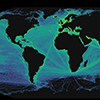
Opinion
by douglas mccauleyWith new marine protected areas and an emerging U.N. treaty, global ocean conservation efforts are on the verge of a major advance. But to enforce these ambitious initiatives, new satellite-based technologies and newly available online data must be harnessed.
Comments | READ MORE
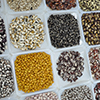
Report
by virginia gewinIn the face of rising temperatures and worsening drought, the world’s repositories of agricultural seeds may hold the key to growing food under increasingly harsh conditions. But keeping these gene banks safe and viable is a complicated and expensive challenge.
Comments | READ MORE

Analysis
by fred pearceSurprising new statistics show that the world economy is expanding while global carbon emissions remain at the same level. Is it possible that the elusive “decoupling” of emissions and economic growth could be happening?
Comments | READ MORE

Analysis
by marc guntherOne of President Obama’s signature achievements on climate has been strict standards aimed at improving auto fuel efficiency to nearly 55 miles per gallon by 2025. But credits and loopholes, coupled with low gas prices, may mean the U.S. will fall well short of this ambitious goal.
Comments | READ MORE
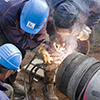
Report
by judith lewis mernitUntil recently, little was known about the extent of methane leaking from urban gas distribution pipes and its impact on global warming. But recent advances in detecting this potent greenhouse gas are pushing U.S. states to begin addressing this long-neglected problem.
Comments | READ MORE
E360 Special Report
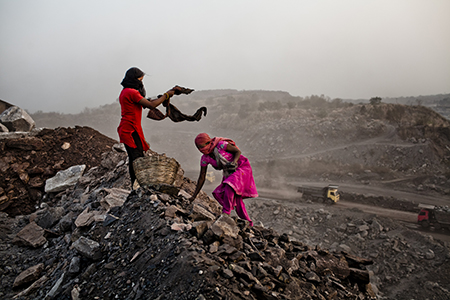 by fred pearce
As part of India's modernization program, Prime Minister Narenda Modi has called for doubling the nation’s coal production by 2020. For the villages in the Jharia coalfield, which is frequently shrouded in smoke from underground fires, the government’s plans have only increased the pressures and dangers of living alongside huge, burning open-pit mines.
Comments | READ MORE
by fred pearce
As part of India's modernization program, Prime Minister Narenda Modi has called for doubling the nation’s coal production by 2020. For the villages in the Jharia coalfield, which is frequently shrouded in smoke from underground fires, the government’s plans have only increased the pressures and dangers of living alongside huge, burning open-pit mines.
Comments | READ MORE

Report
by jim robbinsResearchers are only beginning to understand the complexities of the microbes in the earth’s soil and the role they play in fostering healthy ecosystems. Now, climate change is threatening to disrupt these microbes and the key functions they provide.
Comments | READ MORE

Report
by cheryl katzLow gasoline prices and continuing performance issues have slowed the growth of electric car sales. But that has not stymied progress in electrifying larger vehicles, including garbage trucks, city buses, and medium-sized trucks used by freight giants like FedEx.
Comments | READ MORE

From Mass Coral Bleaching,
A Scientist Looks for Lessons
Twice a year, Georgia Tech climate scientist Kim Cobb travels to Christmas Island in the middle of the Pacific Ocean to collect samples from coral reefs to better understand past and future climate change.
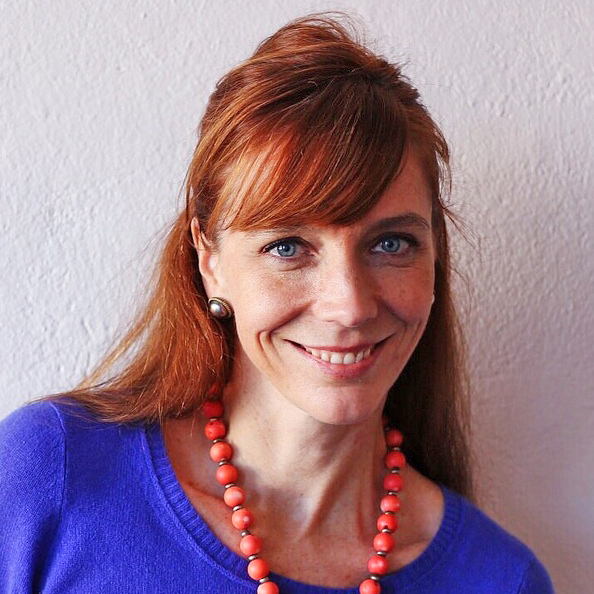
Kim Cobb
But when Cobb arrived on the island earlier this month, she was stunned. The corals she had spent the past 18 years studying were largely dead or dying. The scene has become a familiar one across the Pacific and Indian oceans this year as a record-breaking El Niño drove up water temperatures and caused fragile coral reef systems to bleach from stress or die. In an interview with
Yale Environment 360, Cobb talked about the recent bleaching event, the race to make reefs more resilient, and how coral records could improve short-term climate projections. “What you think reefs might be experiencing in 20 years,” she says, “they're experiencing now.”
Read the interview.Kenyan authorities are set to
burn 105 tons of ivory confiscated from illegally killed elephants this weekend to bring attention to the country’s growing poaching problem.

Kenya Wildlife Service
Kenya conducted its first ivory burn in 1989 after elephant populations in the country dropped 90 percent in 15 years, and it has continued to do such burns periodically since. But the systematic cutting back of an international ban on the sale of ivory over the last 15 years has led to the reemergence of large-scale poaching in Africa. Approximately 30,000 to 50,000 elephants were killed on the continent between 2008 and 2013. Soon after announcing the ivory burn, Kenya’s president, Uhuru Kenyatta, announced his nation would seek a total ban on elephant ivory during a wildlife trade meeting later this year. “We will not be the Africans who stood by as we lost our elephants,”
he said.
For James Hansen, the Science
Demands Activism on Climate
Climate scientist James Hansen has been a prominent figure in the global climate conversation for more than 40 years. His 1988 congressional testimony on climate change helped introduce the problem of rising greenhouse gas emissions to the American public,

James Hansen
and he has led study after study examining how our world will change as a result of global warming. Eight years ago, Hansen made the rare decision to begin engaging in climate activism—a move that has earned him both praise and criticism from the media and scientific community. In an interview with
Yale Environment 360 last week, Hansen opened up about his unconventional career path and what he believes the world could look like a century from now. “I don't think that I have been alarmist — maybe alarming, but I don't think I'm an alarmist,” he said. “We have a society in which most people have become unable to understand or appreciate science, and partly that's a communication problem, which we need to try to alleviate.”
Read the interview. Farmed fish have become an increasingly larger share of the world’s seafood market in recent decades—now accounting for 50 percent of global seafood consumption.

USFWS
At the same time, however, debate about the ethics, safety and health of farmed fish versus their wild counterparts has also intensified. A
new study published in the journal
Nature Scientific Reports finds that half of all farmed Atlantic salmon have deformed ear bones that lead to hearing loss. These salmon are 10 times more likely to have the deformity than wild fish. The findings “raise questions about the welfare of farmed animals,"
said Tim Dempster, a biologist at the University of Melbourne involved in the study. It may also explain why efforts to boost wild populations by releasing farmed juveniles have proven unsuccessful. Hearing loss would prevent farmed fish from detecting predators, or restrict their ability to navigate to breeding sites, the scientists said.
Interview: How Ocean Noise
Wreaks Havoc on Marine Life
Bowing to public pressure, the Obama administration recently reversed an earlier decision to allow oil drilling off the U.S. East Coast. But the five-year moratorium on drilling does not prohibit exploratory seismic air gun surveys
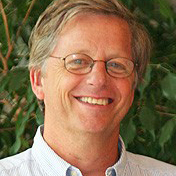
Christopher Clark
used to locate oil and gas reserves under the seabed, and those surveys are expected to be authorized this spring. Cornell University marine bioacoustics expert Christopher Clark says the testing, which can go on for weeks at a time, will only add to the rising din in the oceans. “Imagine that every 10 seconds there is an explosion that is rattling grandma’s china out of the cupboard,” he says, “and it is falling on the floor.” In an interview with
Yale Environment 360, Clark explains how noise, most of it from ship traffic, severely disrupts marine life, especially among whales. But the good news, he says, is that technologies are being developed to drastically reduce the noise from ships and geological surveying.
Read the interview.Architects are increasingly abandoning traditional steel-and-cement skyscrapers in favor of wood-and-glue designs — a move that experts say could help drastically reduce CO2 emissions from the world’s building sector.

Acton Ostry Architects
Creating steel, iron, and non-metallic minerals — including concrete — is an energy-intensive process that accounts for more than 10 percent of global greenhouse gas emissions. In the 1990s, developers created a product known as cross-laminated timber — planks of wood glued together by a polyurethane adhesive — with the strength and durability of traditional building materials, and far fewer CO2 emissions. With concern for climate change mounting,
wood-based skyscrapers have been popping up around the globe in recent years. The University of British Columbia, for example, approved an 18-story, wooden housing complex in 2015. “This revolution has happened rather quietly and happened rather slow,” Kris Spickler, a heavy timber specialist at Structurlam,
told Popular Science. “But I think we’re in a year right now where we’re going to see it explode.”

Yale Environment 360 is
a publication of the
Yale School of Forestry
& Environmental Studies.


About e360
Contact
Submission Guidelines
Reprints
 Yale Environment 360
Yale Environment 360 articles are now available in Spanish and Portuguese on
Universia, the online educational network.
Visit the site.
Opinion
Reports
Analysis
Interviews
Forums
e360 Digest
Podcasts
Video Reports
Biodiversity
Business & Innovation
Climate
Energy
Forests
Oceans
Policy & Politics
Pollution & Health
Science & Technology
Sustainability
Urbanization
Water
Antarctica and the Arctic
Africa
Asia
Australia
Central & South America
Europe
Middle East
North America

Tribal people and ranchers join together to stop a project that would haul coal across their Montana land.
Watch the video.
The latest
from
Yale
Environment 360 is now available for mobile devices at
e360.yale.edu/mobile.

The 2015 Yale e360 Video Contest winner documents a Northeastern town's bitter battle over a wind farm.
Watch the video.

A 2015 Yale e360 Video Contest winner captures stunning images of wild salmon runs in Alaska.
Watch the video.

An
e360 video series looks at the staggering amount of food wasted in the U.S. – a problem with major human and environmental costs.
Watch the video.

An
e360 video goes onto the front lines with Colorado firefighters confronting deadly blazes fueled by a hotter, drier climate.
Watch the video.

A three-part series
Tainted Harvest looks at the soil pollution crisis in China, the threat it poses to the food supply, and the complexity of any cleanup.
Read the series.






























